Why are sets restored ? Having 32 pieces in good condition is generally what collectors and the casual buyer want, they may never use a set but they want it complete so it could fulfill its theoretical purpose, it also goes to the perfectionist trait than many buyers have (Jaques collectors are very picky for example !). A complete set is worth substantially more than a part set of 31 pieces. Sets in mint condition bring a premium over sets showing damage or losses. As mentioned elsewhere on this site keeping 32 pieces together for centuries and not getting them damaged is a tall order. As a result if you see a number of antique sets for sale from the one seller that are all in perfect condition its safe to say some have been restored. In general the more noticeable and extensive the restoration on a set the more it effects the sets value .
So you find an antique set which is complete and you are interested in purchasing it. Here the problem for you is to try to establish the amount of restoration present in the set – this can be ascertained from the seller or from your own visual inspection. Of course you may not be able to rely on the sellers word (either because he will not tell you the truth or because he may not genuinely know if restoration was undertaken by one of the previous owners).
One way of minimising the risk of your own inspection failing to detect work done or replacements inserted, is to examine each piece individually and checking for consistency of shape, size and colour among the pieces. If possible do this inspection in good natural light conditions as this will improve your chances of detecting repairs and in particular shade differences between the pieces.
It should of course be borne in mind that in the early sets and those produced by native turners without advanced lathes will have a degree of variation in format and size among pieces, this is not unusual. However for 19th Century chess sets originally turned in professional workshops, any significant variation among pieces should be a cause for concern.
Even when there is total consistency in form, size and colour among pieces it does not necessarily guarantee the total originality of all pieces but at least it would suggest that any changes made are of a high quality and therefore more acceptable.
So what are the types of damage typically encountered by collectors ? Here in ascending order of seriousness are the main problems encountered in bone,ivory and wooden playing sets;
Dirt or grit on the pieces
Not a problem as can be cleaned off – although care should be taken to avoid over-cleaning and thereby removing patina accumulated over the ages. This is particularly true in respect of very old carved polychrome sets where any cleaning might remove the original colors, the walrus carved figural set (circa1750) below is an example of a set where little or no cleaning should be attempted.
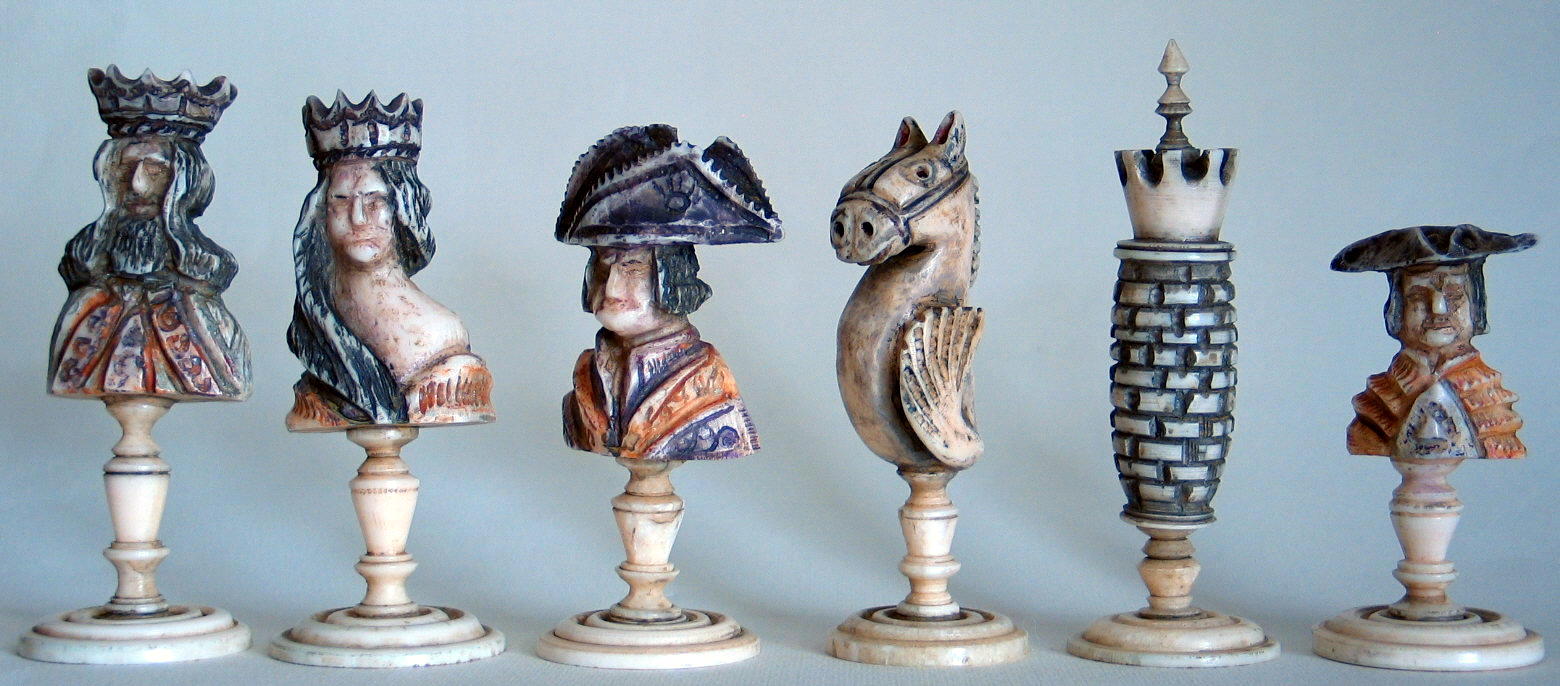
Some lightening of stain
This can
occur naturally over time and can in some case make a set more
attractive, in general this
does not effect a set's value. The
Burmese set(circa 1850) shown below displays a small degree of stain
fade particularly on the flags of the rooks and the faces of the bishops.
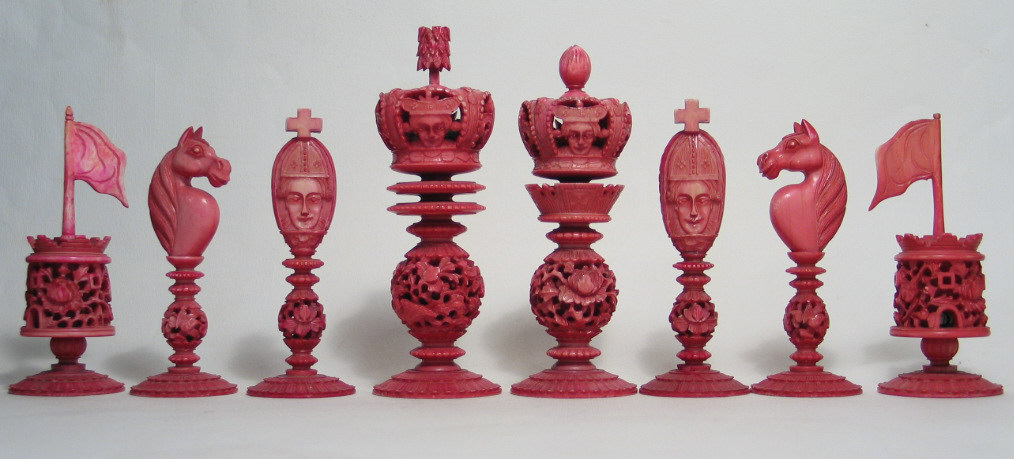
Stain wear
This is where, from handling of pieces, the stain has worn off in spots exposing the natural ivory or bone. Again this is perfectly natural and indeed where consistent throughout the set can help show that all the pieces are original to the set. The Old English ivory set (circa 1800) shown displays an even level of stain wear throughout.
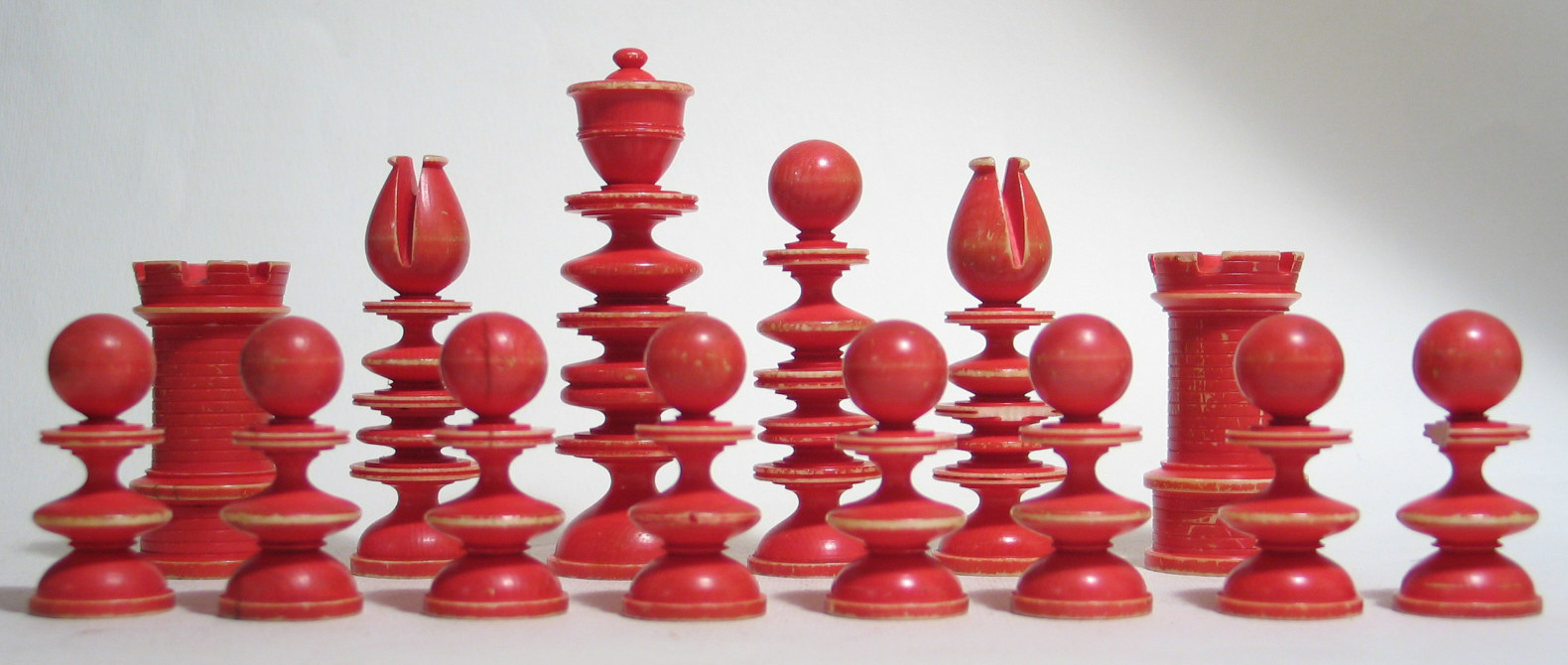
Small chips
Typical around extremities or collars, this should not deter you buying an otherwise attractive set.
Some surface cracking or crazing.
Deep cracks that have split some of the pieces is a serious condition problem and virtiually impossible to fix. Light surface cracks in general are not a problem. The image shown of a fine Dublin pattern ivory set (circa 1850) below shows light surface cracking which does not significantly detract from the appearance of the pieces.
alt="Antique Chess Set"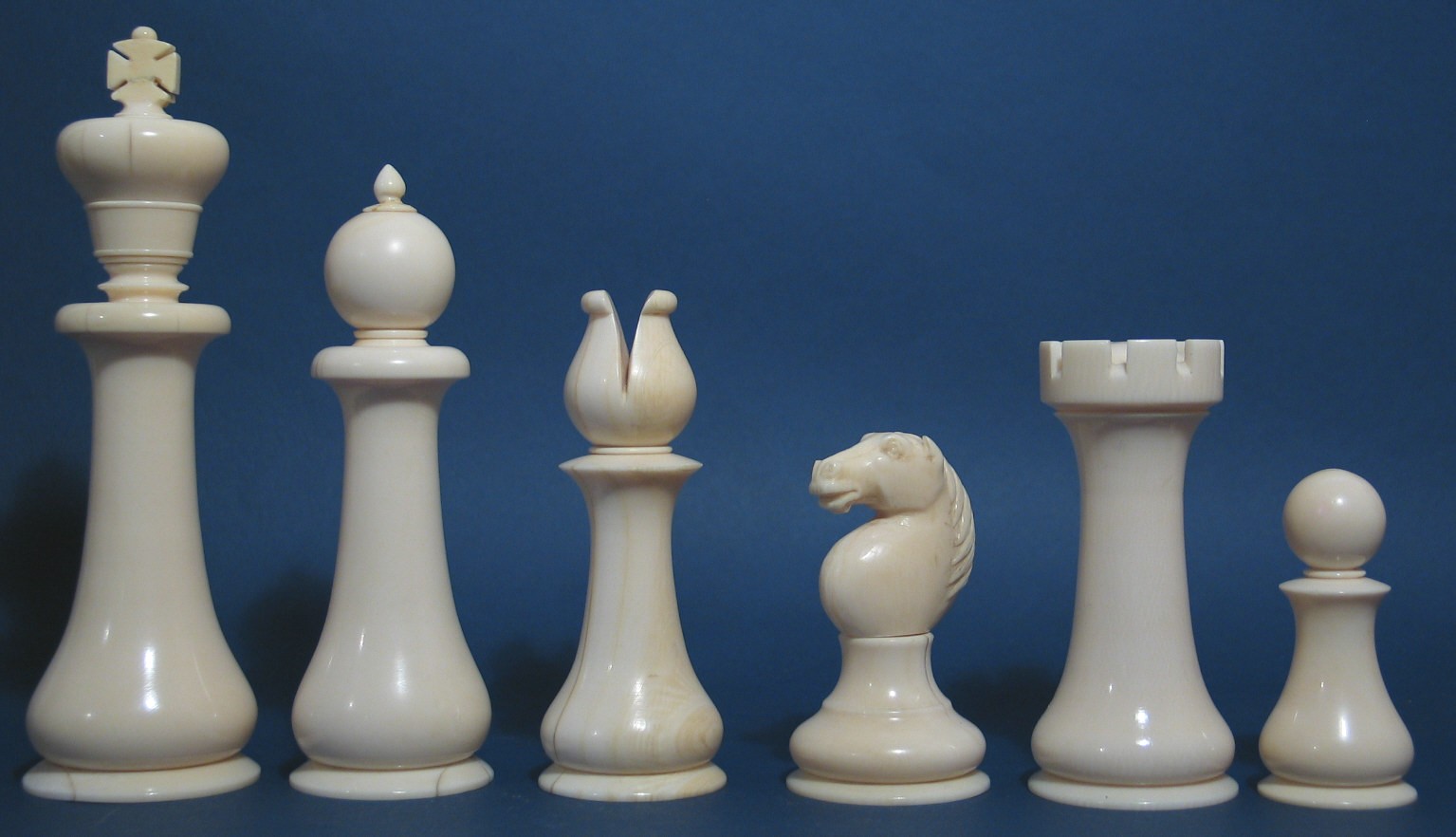
Pieces broken at the stem
Should not be a huge problem to have fixed particularly if the break is clean.
Large or extensive chipping throughout a set
To be avoided especially in unimportant sets.
Evidence of re-dying of all the pieces on the stained side.
This can sometimes suggest an effort to camouflage recent replacement pieces. However in very old sets, the re- staining may have been done 200 years ago e.g. at the beginning of the 19th Century when black-stained pieces were re-stained by owners to a red stain which was then becoming fashionable. The Indian carved and turned ivory set (circa 1780) show, is an example of 19th Century re-staining and is part of the history of the set and not the sign of a rebuilt set.
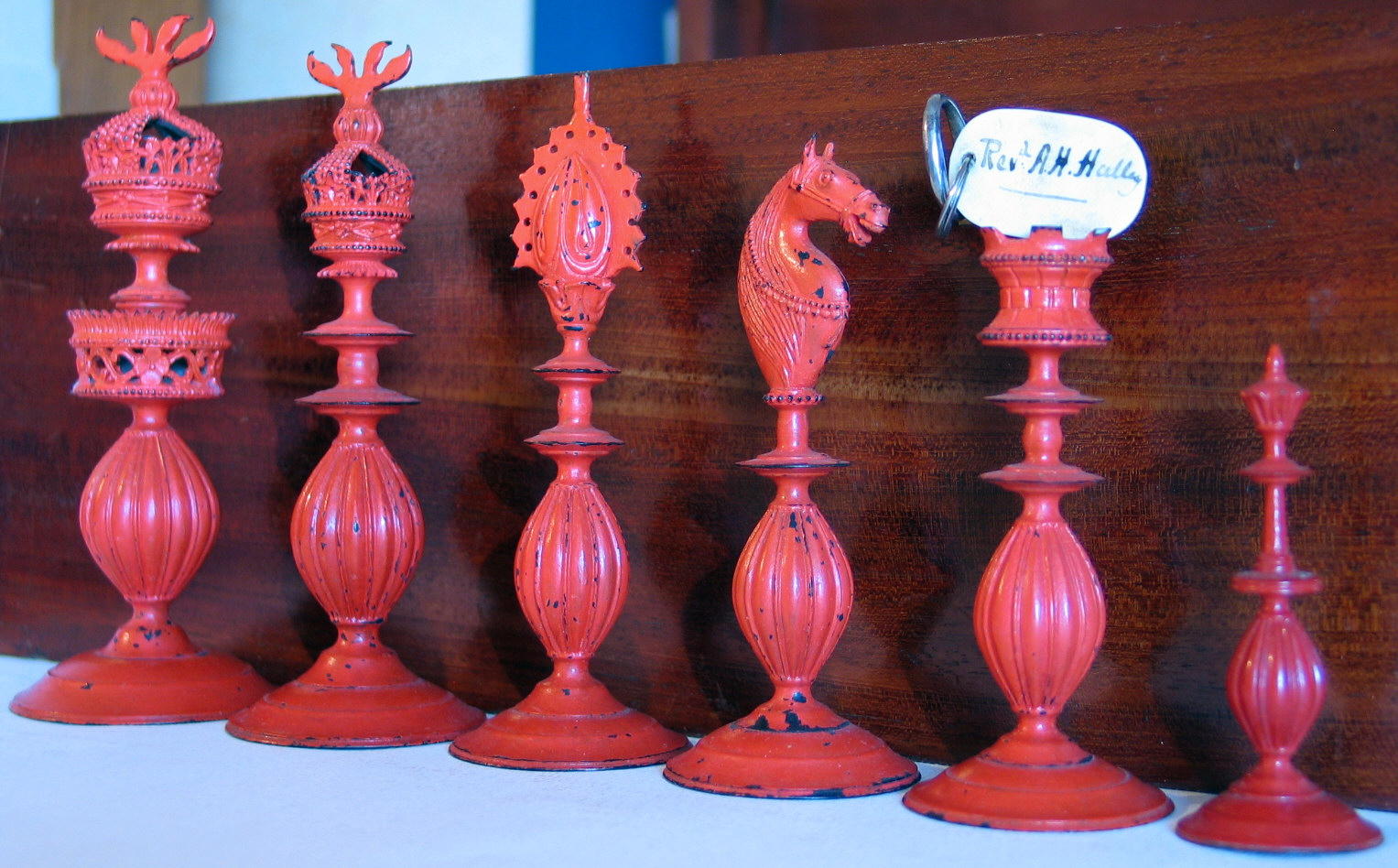
Missing pieces
This is the most serious problem faced by collectors, as an incomplete set (unless it is early or rare) is less attractive to own and therefore more difficult to sell later. While there is always an outside chance that in the case of mass produced sets, identical replacement pieces may be found later – however in my experience it is almost impossible to ‘fill in’ lost pieces.
In these
circumstance if a set is to be made complete the only option is to
engage the services of a reputable restorer and have the missing
pieces made. Whether a collector should embark on such a course
depends on personal taste. You might want to ask the following
questions. Is the set worth spending money on ? Are
the missing pieces predominately turned or carved (carving being much
more costly and difficult to replicate) ? Will the replacement
pieces need to be stained (matching existing stain precisely is
difficult) ?
The part set show in point 3 above is missing 4
knights and therefore is probably not worth the cost and risk of
getting replacements made.
In further articles I propose to explore the issues surrounding decisions to undertake restoration of chess sets and when does restoration become reproduction.
Click here to return to the the : main page
Copyright Dermot Rochford 2005. Do not reproduce or publish without my prior consent.